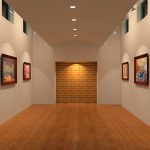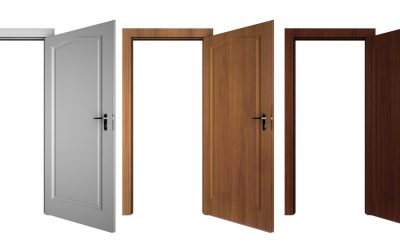Wrought iron is an ancient craft. Examples of wrought iron work date back to the ancient civilizations of Egypt and Mesopotamia. In Ancient Greece, its major use was for weapons. The adoption of this technique to produce sturdy wrought iron exterior doors came later.
Wrought Iron to the Middle Ages: A Brief History
Wrought iron was the most common form of malleable iron for centuries. It was only displaced with the development of modern steel. Until then, wrought iron found its way to every small city, city state and country across Europe and the Middle East. Armies chose wrought iron as the material of choice for their weapons. Those that survive form the earlier centuries show the two characteristics much appreciated by these earlier civilizations: Beauty and functionality.
Farmers and builders also found a use for wrought iron. They used wrought iron tools to work their fields and construct buildings. Until the so-called Middle Ages, these were the main purposes of this metal process. In this form they served the Gods of war, peace and beauty.
Wrought Iron Exterior Doors: A Gift from the Middle Ages
The period known as the Middle Ages saw the expansion of uses for wrought iron. Although it was still the major material used to produce tools and weapons, it also was put to other uses. Medieval man saw it as a means of protecting his residence, business and other buildings. Wrought iron was employed as a protective device over doors and windows. It melded with the wood to produce wrought iron exterior doors.
At the same time, another development was taking place. The decorative functions found previously in other forms of metalwork, began to be incorporated into the workings of doors and windows. The iron exterior doors and windows now sported intricate lacework and other elegant patterns. Churches and cathedrals in England and across Europe boasted fine examples of decorative wrought iron exterior doors and windows. Classic examples of this ornamental embellishment are seen even today in Canterbury Cathedral, United Kingdom and Notre Dame Cathedral, Paris.
Throughout the 16th and subsequent centuries, the employment of wrought iron grew. Although never completely abandoning its characteristics as a security measure, the craftsmen and designers focused more on its ability to esthetically transform a structure. Wrought iron exterior doors became only part of the story. The material was employed for:
- Balconies
- Gates
- Patios
- Stairways
- Railings of all types
Over the next two centuries, buildings in Spain, France, England and, eventually the United States adopted the elegant and even sophisticated designs that artists were producing. This all declined with the advance in the market of mild steel. Wrought iron, as a product, soon became a rarity produced only by a select few crafts people after the 1970s.
Wrought Iron Exterior Doors, Today
Today, you can revive that old-world elegance and style for your home. By adding a wrought iron exterior door, you can recreate your own vision of the past. You can achieve an entryway that reflects the craftsmanship of days long past. Wrought iron exterior doors, through their ability to be both beautiful and practical, allow you and your family to provide your home with a new, elegant and unique look that will be the envy of the neighborhood.







